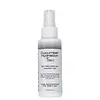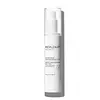What's inside
What's inside
 Key Ingredients
Key Ingredients

 Benefits
Benefits

 Concerns
Concerns

 Ingredients Side-by-side
Ingredients Side-by-side

Hamamelis Virginiana Water
AstringentWater
Skin ConditioningAlcohol Denat.
AntimicrobialGlycerin
HumectantPolysorbate 20
EmulsifyingCerium Oxide
Sodium PCA
HumectantCucumis Sativus Fruit Extract
EmollientFructooligosaccharides
HumectantGlucosamine Hcl
Honey
HumectantPhospholipids
Skin ConditioningCommiphora Myrrha Oil
MaskingSphingolipids
EmollientHyaluronic Acid
HumectantBorago Officinalis Seed Oil
EmollientCucumis Sativus Oil
EmollientBenzyl Alcohol
PerfumingPhenoxyethanol
PreservativeParfum
MaskingHamamelis Virginiana Water, Water, Alcohol Denat., Glycerin, Polysorbate 20, Cerium Oxide, Sodium PCA, Cucumis Sativus Fruit Extract, Fructooligosaccharides, Glucosamine Hcl, Honey, Phospholipids, Commiphora Myrrha Oil, Sphingolipids, Hyaluronic Acid, Borago Officinalis Seed Oil, Cucumis Sativus Oil, Benzyl Alcohol, Phenoxyethanol, Parfum
Water
Skin ConditioningMethyl Gluceth-20
HumectantSodium PCA
HumectantHamamelis Virginiana Extract
AntiseborrhoeicChamomilla Recutita Extract
Skin ConditioningCamellia Sinensis Leaf Extract
AntimicrobialSymphytum Officinale Callus Culture Extract
Skin ConditioningSea Salt
AbrasiveAscorbic Acid
AntioxidantPanthenol
Skin ConditioningLavandula Angustifolia Extract
Skin ConditioningPolysorbate 20
EmulsifyingSodium Benzoate
MaskingDisodium EDTA
Phenoxyethanol
PreservativeWater, Methyl Gluceth-20, Sodium PCA, Hamamelis Virginiana Extract, Chamomilla Recutita Extract, Camellia Sinensis Leaf Extract, Symphytum Officinale Callus Culture Extract, Sea Salt, Ascorbic Acid, Panthenol, Lavandula Angustifolia Extract, Polysorbate 20, Sodium Benzoate, Disodium EDTA, Phenoxyethanol
Alternatives
Ingredients Explained
These ingredients are found in both products.
Ingredients higher up in an ingredient list are typically present in a larger amount.
Phenoxyethanol is a preservative that has germicide, antimicrobial, and aromatic properties. Studies show that phenoxyethanol can prevent microbial growth. By itself, it has a scent that is similar to that of a rose.
It's often used in formulations along with Caprylyl Glycol to preserve the shelf life of products.
Polysorbate 20 is made by combining ethoxylation of sorbitan, ethylene oxide, and lauric acid. It is a mild cleansing agent, surfactant, and emulsifier.
As a surfactant, it helps collect dirt and oils for washing. Emulsifiers prevent oils and water from separating.
Polysorbate 20 also adds scent to a product. Since it is made using sorbitol, it has a sweet scent. Sorbitol can also be found in fruits such as apples and peaches.
The lauric acid used to create Polysorbate 20 is often derived from coconuts.
Polysorbate 20 may not be fungal acne safe.
Learn more about Polysorbate 20Sodium PCA is the sodium salt of pyroglutamic acid. It is naturally occurring in our skin's natural moisturizing factors where it works to maintain hydration.
The PCA stands for pyrrolidone carboxylic acid, a natural amino acid derivative.
This ingredient has skin conditioning, anti-inflammatory, and humectant properties. Humectants help hydrate your skin by drawing moisture from the air. This helps keep your skin moisturized.
Learn more about Sodium PCAWater. It's the most common cosmetic ingredient of all. You'll usually see it at the top of ingredient lists, meaning that it makes up the largest part of the product.
So why is it so popular? Water most often acts as a solvent - this means that it helps dissolve other ingredients into the formulation.
You'll also recognize water as that liquid we all need to stay alive. If you see this, drink a glass of water. Stay hydrated!
Learn more about Water